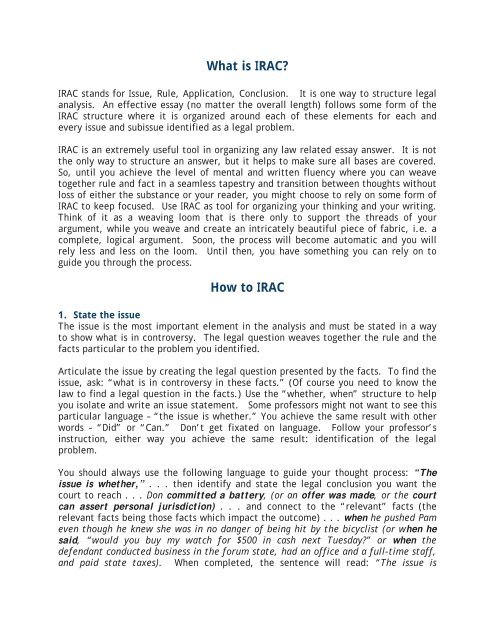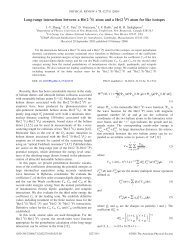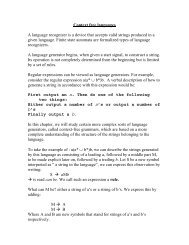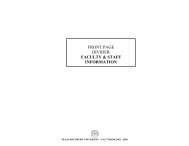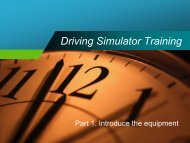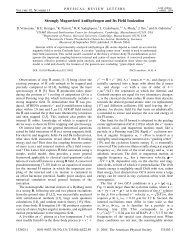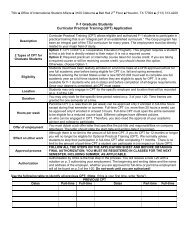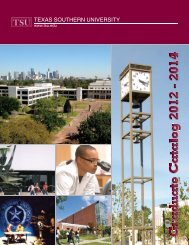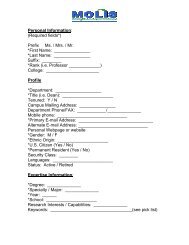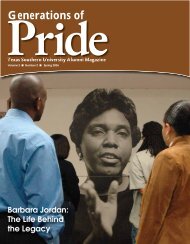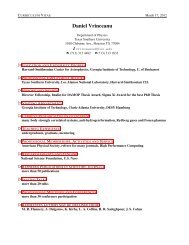What is IRAC? How to IRAC
What is IRAC? How to IRAC
What is IRAC? How to IRAC
Create successful ePaper yourself
Turn your PDF publications into a flip-book with our unique Google optimized e-Paper software.
<strong>What</strong> <strong>is</strong> <strong>IRAC</strong>?<br />
<strong>IRAC</strong> stands for Issue, Rule, Application, Conclusion. It <strong>is</strong> one way <strong>to</strong> structure legal<br />
analys<strong>is</strong>. An effective essay (no matter the overall length) follows some form of the<br />
<strong>IRAC</strong> structure where it <strong>is</strong> organized around each of these elements for each and<br />
every <strong>is</strong>sue and sub<strong>is</strong>sue identified as a legal problem.<br />
<strong>IRAC</strong> <strong>is</strong> an extremely useful <strong>to</strong>ol in organizing any law related essay answer. It <strong>is</strong> not<br />
the only way <strong>to</strong> structure an answer, but it helps <strong>to</strong> make sure all bases are covered.<br />
So, until you achieve the level of mental and written fluency where you can weave<br />
<strong>to</strong>gether rule and fact in a seamless tapestry and transition between thoughts without<br />
loss of either the substance or your reader, you might choose <strong>to</strong> rely on some form of<br />
<strong>IRAC</strong> <strong>to</strong> keep focused. Use <strong>IRAC</strong> as <strong>to</strong>ol for organizing your thinking and your writing.<br />
Think of it as a weaving loom that <strong>is</strong> there only <strong>to</strong> support the threads of your<br />
argument, while you weave and create an intricately beautiful piece of fabric, i.e. a<br />
complete, logical argument. Soon, the process will become au<strong>to</strong>matic and you will<br />
rely less and less on the loom. Until then, you have something you can rely on <strong>to</strong><br />
guide you through the process.<br />
<strong>How</strong> <strong>to</strong> <strong>IRAC</strong><br />
1. State the <strong>is</strong>sue<br />
The <strong>is</strong>sue <strong>is</strong> the most important element in the analys<strong>is</strong> and must be stated in a way<br />
<strong>to</strong> show what <strong>is</strong> in controversy. The legal question weaves <strong>to</strong>gether the rule and the<br />
facts particular <strong>to</strong> the problem you identified.<br />
Articulate the <strong>is</strong>sue by creating the legal question presented by the facts. To find the<br />
<strong>is</strong>sue, ask: “what <strong>is</strong> in controversy in these facts.” (Of course you need <strong>to</strong> know the<br />
law <strong>to</strong> find a legal question in the facts.) Use the “whether, when” structure <strong>to</strong> help<br />
you <strong>is</strong>olate and write an <strong>is</strong>sue statement. Some professors might not want <strong>to</strong> see th<strong>is</strong><br />
particular language – “the <strong>is</strong>sue <strong>is</strong> whether.” You achieve the same result with other<br />
words – “Did” or “Can.” Don’t get fixated on language. Follow your professor’s<br />
instruction, either way you achieve the same result: identification of the legal<br />
problem.<br />
You should always use the following language <strong>to</strong> guide your thought process: “The<br />
<strong>is</strong>sue <strong>is</strong> whether,” . . . then identify and state the legal conclusion you want the<br />
court <strong>to</strong> reach . . . Don committed a battery, (or an offer was made, or the court<br />
can assert personal jur<strong>is</strong>diction) . . . and connect <strong>to</strong> the “relevant” facts (the<br />
relevant facts being those facts which impact the outcome) . . . when he pushed Pam<br />
even though he knew she was in no danger of being hit by the bicycl<strong>is</strong>t (or when he<br />
said, “would you buy my watch for $500 in cash next Tuesday?” or when the<br />
defendant conducted business in the forum state, had an office and a full-time staff,<br />
and paid state taxes). When completed, the sentence will read: “The <strong>is</strong>sue <strong>is</strong>
whether Don committed a battery when he pushed Pam even though he knew she was<br />
in no danger of being hit by the bicycl<strong>is</strong>t.”<br />
2. State the law<br />
After you have the <strong>is</strong>sue, you must articulate the rule. The rule and the facts are<br />
inextricably linked. Your analys<strong>is</strong> of the facts will not make sense unless you have<br />
first identified the rule which determines the legal meaning <strong>to</strong> be attributed <strong>to</strong> those<br />
facts.<br />
Use building blocks for writing the rule of law, consider:<br />
♦ Elements<br />
♦ Definitions<br />
♦ Exceptions <strong>to</strong> the general rule<br />
♦ Limitations <strong>to</strong> the rule<br />
♦ Defenses<br />
When writing, follow a hierarchy of concepts by:<br />
♦ Moving from the general <strong>to</strong> the specific<br />
♦ Defining each legal term of art<br />
Identify:<br />
♦ The consequences of applying the rule – what will happen?<br />
♦ <strong>What</strong> are the consequences of th<strong>is</strong> rule in th<strong>is</strong> situation?<br />
Which leads you <strong>to</strong> consider:<br />
♦ <strong>What</strong> does application of the rule mean here? <strong>What</strong> will be its effect?<br />
3. Analyze the facts in light of the law<br />
The analys<strong>is</strong> or application <strong>is</strong> the heart of the d<strong>is</strong>cussion and sometimes works better<br />
combined with the rule. It <strong>is</strong> where you examine the <strong>is</strong>sues ra<strong>is</strong>ed by the facts in light<br />
of the rule. Your statement of the rule will drive your organization of the analys<strong>is</strong>.<br />
You simply match up each element you have identified in the rule (in order) with a<br />
fact, using the word “because” <strong>to</strong> make the connection between rule and fact.<br />
“Because” <strong>is</strong> the single most important word <strong>to</strong> use when writing the analys<strong>is</strong>. Using<br />
the word “because” forces you <strong>to</strong> make the connection between rule and fact. Also<br />
make use of the words “as” and “since” — they serve the same function as “because”<br />
and sometimes will sound less redundant when used in the same paragraph as<br />
“because.”<br />
4. Conclusion<br />
Conclude each <strong>is</strong>sue before drawing your final overall conclusion. There <strong>is</strong> no right or<br />
wrong answer, only logical analys<strong>is</strong> based on the rule and the facts which lead <strong>to</strong> a<br />
reasonable conclusion. Note: Repeat the process for each <strong>is</strong>sue you identify — each<br />
<strong>is</strong>sue forms the bas<strong>is</strong> for a separate <strong>IRAC</strong> analys<strong>is</strong>.
Examples<br />
1a. Don’t write:<br />
In th<strong>is</strong> case, while Pete the police officer was giving Dan a sobriety test, he noticed<br />
that Dan fit the description of an eyewitness <strong>to</strong> the robbery, giving the police officer<br />
probable cause <strong>to</strong> arrest Dan.<br />
1b. Do write:<br />
In th<strong>is</strong> case, Pete the police officer realized that Dan fit the description of the<br />
suspect, providing probable cause for arrest, because Dan was extremely tall at<br />
6’4”, was wearing a green and tan sweater with purple patches and pointy-<strong>to</strong>ed<br />
alliga<strong>to</strong>r cowboy boots, fitting the description provided by the eyewitness <strong>to</strong> the<br />
robbery.<br />
2a. Don’t write:<br />
ABC Inc. engaged Dr. Jones <strong>to</strong> develop a drug that reduced hair loss. Dr. Jones<br />
worked in h<strong>is</strong> own labora<strong>to</strong>ry, hired and fired h<strong>is</strong> own ass<strong>is</strong>tants and set their<br />
working hours as well as h<strong>is</strong> own. He meets with the President of ABC every Friday<br />
morning <strong>to</strong> d<strong>is</strong>cuss progress on the project, and at th<strong>is</strong> time, Dr. Jones submits h<strong>is</strong><br />
timesheet for payment. The President pays Dr. Jones weekly.<br />
2b. Do write:<br />
Here, Dr. Jones can be considered an independent consultant for ABC Inc. because he<br />
completes all the research and development work in h<strong>is</strong> own labora<strong>to</strong>ry, in a<br />
separate facility from that of ABC, where he has direct control over the employees<br />
because he hired h<strong>is</strong> own ass<strong>is</strong>tants, setting their work hours. He also exerc<strong>is</strong>es<br />
direct control over h<strong>is</strong> own work because he sets h<strong>is</strong> own work hours and only meets<br />
with ABC once a week. Further, since he only meets with the President of ABC on a<br />
weekly bas<strong>is</strong> <strong>to</strong> d<strong>is</strong>cuss progress on development of the hair loss product, the<br />
President does not superv<strong>is</strong>e Dr. Jones on a daily bas<strong>is</strong> as <strong>to</strong> the work which goes on<br />
in the labora<strong>to</strong>ry.


